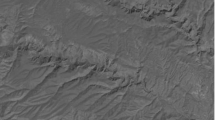Abstract
We present a stochastic gradient descent optimisation method for image registration with adaptive step size prediction. The method is based on the theoretical work by Plakhov and Cruz (J. Math. Sci. 120(1):964–973, 2004). Our main methodological contribution is the derivation of an image-driven mechanism to select proper values for the most important free parameters of the method. The selection mechanism employs general characteristics of the cost functions that commonly occur in intensity-based image registration. Also, the theoretical convergence conditions of the optimisation method are taken into account. The proposed adaptive stochastic gradient descent (ASGD) method is compared to a standard, non-adaptive Robbins-Monro (RM) algorithm. Both ASGD and RM employ a stochastic subsampling technique to accelerate the optimisation process. Registration experiments were performed on 3D CT and MR data of the head, lungs, and prostate, using various similarity measures and transformation models. The results indicate that ASGD is robust to these variations in the registration framework and is less sensitive to the settings of the user-defined parameters than RM. The main disadvantage of RM is the need for a predetermined step size function. The ASGD method provides a solution for that issue.
Article PDF
Similar content being viewed by others
Explore related subjects
Discover the latest articles, news and stories from top researchers in related subjects.Avoid common mistakes on your manuscript.
References
Collignon, A., Maes, F., Delaere, D., Vandermeulen, D., Suetens, P., & Marchal, G. (1995). Automated multi-modality image registration based on information theory. In Bizais, Y., Barillot, C., Di Paola, R. (Eds.), Information Processing in Medical Imaging (pp. 263–274). Dordrecht: Kluwer Academic.
Cruz, P. (2005a). Almost sure convergence and asymptotical normality of a generalization of Kesten’s stochastic approximation algorithm for multidimensional case (Technical Report). Cadernos de Matemática, Série de Investigação, Collection of University of Aveiro, Department of Mathematics. http://193.136.81.248/dspace/handle/2052/74.
Cruz, P. (2005b). Aproximação estocástica com valor do passo adaptativo. PhD thesis, University of Aveiro, Department of Mathematics. http://193.136.81.248/dspace/handle/2052/103.
Dice, L. R. (1945). Measures of the amount of ecologic association between species. Ecology, 26(3), 297–302.
Hermosillo, G., Chefd’hotel, C., & Faugeras, O. (2002). Variational methods for multimodal image matching. International Journal of Computer Vision, 50(3), 329–343.
Hu, S., Hoffman, E. A., & Reinhardt, J. M. (2001). Automatic lung segmentation for accurate quantitation of volumetric X-Ray CT images. IEEE Transactions on Medical Imaging, 20(6), 490–498.
Klein, S., Staring, M., & Pluim, J. P. W. (2007). Evaluation of optimization methods for nonrigid medical image registration using mutual information and B-splines. IEEE Transactions on Image Processing, 16(12), 2879–2890.
Kushner, H. J., & Yin, G. G. (2003). Stochastic Approximation and Recursive Algorithms and Applications (2nd edn.) New York: Springer.
Maintz, J. B. A., & Viergever, M. A. (1998). A survey of medical image registration. Medical Image Analysis, 2(1), 1–36.
Modersitzki, J. (2004). Numerical Methods for Image Registration. London: Oxford University Press.
Petersen, K. B., & Pedersen, M. S. (2007). The Matrix Cookbook. http://matrixcookbook.com.
Plakhov, A., & Cruz, P. (2004). A stochastic approximation algorithm with step size adaptation. Journal of Mathematics and Sciences, 120(1), 964–973.
Pluim, J. P. W., Maintz, J. B. A., & Viergever, M. A. (2003). Mutual-information-based registration of medical images: a survey. IEEE Transactions on Medical Imaging, 22(8), 986–1004.
Robbins, H., & Monro, S. (1951). A stochastic approximation method. Annals of Mathematical Statistics, 22(3), 400–407.
Rueckert, D., Sonoda, L. I., Hayes, C., Hill, D. L. G., Leach, M. O., & Hawkes, D. J. (1999). Nonrigid registration using free-form deformations: Application to breast MR images. IEEE Transactions on Medical Imaging, 18(8), 712–721.
Schäfer, J., & Strimmer, K. (2005). A shrinkage approach to large-scale covariance matrix estimation and implications for functional genomics. Statistical Applications in Genetics and Molecular Biology, 4(1), article 32.
Shi, Z. J., & Shen, J. (2005). Step-size estimation for unconstrained optimization methods. Computational & Applied Mathematics, 24(3), 399–416.
Sluimer, I., Prokop, M., & van Ginneken, B. (2005). Toward automated segmentation of the pathological lung in CT. IEEE Transactions on Medical Imaging, 24(8), 1025–1038.
Thévenaz, P., & Unser, M. (2000). Optimization of mutual information for multiresolution image registration. IEEE Transactions on Image Processing, 9(12), 2083–2099.
Viola, P., & Wells III, W. M. (1995). Alignment by maximization of mutual information. In Grimson, E., Shafer, S., Blake, A., & Sugihara, K. (Eds.), International Conference on Computer Vision (pp. 16–23). Los Alamitos: IEEE Computer Society Press.
Vysochanskij, D. F., & Petunin, Y. I. (1980). Justification of the 3σ rule for unimodal distributions. Theory of Probability and Mathematical Statistics, 21, 25–36.
West, J., et al. (1997). Comparison and evaluation of retrospective intermodality brain image registration techniques. Journal of Computer Assisted Tomography, 21(4), 554–566.
Zitová, B., & Flusser, J. (2003). Image registration methods: a survey. Image and Vision Computing, 21(11), 977–1000.
Author information
Authors and Affiliations
Corresponding author
Rights and permissions
Open Access This is an open access article distributed under the terms of the Creative Commons Attribution Noncommercial License (https://creativecommons.org/licenses/by-nc/2.0), which permits any noncommercial use, distribution, and reproduction in any medium, provided the original author(s) and source are credited.
About this article
Cite this article
Klein, S., Pluim, J.P.W., Staring, M. et al. Adaptive Stochastic Gradient Descent Optimisation for Image Registration. Int J Comput Vis 81, 227–239 (2009). https://doi.org/10.1007/s11263-008-0168-y
Received:
Accepted:
Published:
Issue Date:
DOI: https://doi.org/10.1007/s11263-008-0168-y




